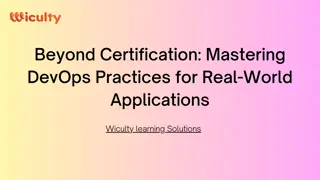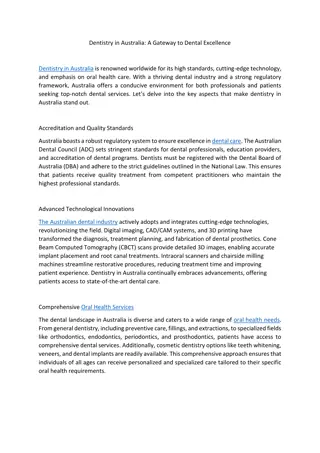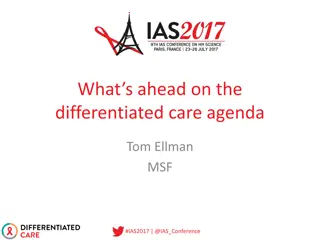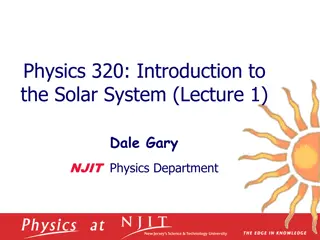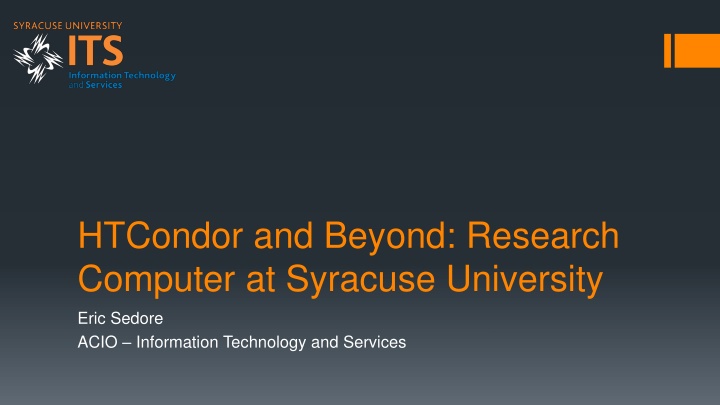
Innovations in Research Computing at Syracuse University
Discover how Syracuse University leverages HTCondor and virtual machines to enhance research computing capabilities, including dynamic resource provisioning, campus backbone upgrades, and optimizing workload management for diverse research needs.
Download Presentation

Please find below an Image/Link to download the presentation.
The content on the website is provided AS IS for your information and personal use only. It may not be sold, licensed, or shared on other websites without obtaining consent from the author. If you encounter any issues during the download, it is possible that the publisher has removed the file from their server.
You are allowed to download the files provided on this website for personal or commercial use, subject to the condition that they are used lawfully. All files are the property of their respective owners.
The content on the website is provided AS IS for your information and personal use only. It may not be sold, licensed, or shared on other websites without obtaining consent from the author.
E N D
Presentation Transcript
HTCondor and Beyond: Research Computer at Syracuse University Eric Sedore ACIO Information Technology and Services
HTCondor @ Syracuse (OrangeGrid) Scavenging compute time from ~3000 desktops on campus Virtual machines running in the background on idle desktops with HTCondor running inside the VM tunneled to a private HTCondor network via VPN Condor Virtual Machine Coordinator (CVMC) interfaces with HTCondor to launch and manage virtual machines Grown from 6000 to 10000+ cores over the last year Added ~1000 dedicated cores
Updates to OrangeGrid Campus backbone upgrade to 40Gb and building links upgraded to 10Gb where node density is significant Methodology to support large VM s (20GB+) on desktop clients Dynamically build virtual machine based on job requirements (CPU(s), memory) New controls to manage how many of a job type (with it s associated VM) may run on each client (due to VM/jobs requiring heavy disk I/O or larger VM s introducing memory pressure)
Focus Areas 1. Bridging the gap with the researcher Better understand the researcher s tool Assist with scripting the last mile - finding the right level of investment Does more assistance = more scholarly output? 2. Dynamically provision hardware resources Researchers coming in all shapes and sizes Compute resources are available to meet most needs, however given the diversity of research and the need for custom environments it is often in the wrong form Focus on a virtualized research cloud
Research Cloud backfill, priority, and oversubscription Attempting to blend single large machines, small clusters of largish machines (100 s), then typically smaller compute nodes to fill in the cracks Resource caps, pools, and weighting to try and place and manage load effectively Provide hints about what work should be prioritized and/or we can let the workloads fight it out controlled by the scheduler flock of birds when a large virtual machine (32 cores / 128 GB) goes active on a host as load balancing kicks in Current oversubscription is 3:1 4:1 or 5:1 appears possible though contention will become more likely (can we identify who cares if they run a little slower?)
An old, somewhat painful story - VM Management Three different hypervisors Oracle VirtualBox - OrangeGrid VMware ESX research cloud Microsoft Hyper-V research cloud Four research VM s distributed across the hypervisors (with multiple versions) Default Linux node (Ubuntu) LIGO (SL6) 3D Render Node (Ubuntu) BLAST Search (Ubuntu)
The Wonderful, Unpredictable World of Research Computing System Administrator How many CPU s, how much memory, how many IOPS, and what type of networking? Give me your requirements Do you need backups, how often, is there a time when load is low? What kind of uptime do you need? Just 60 terabytes? Researcher I d like to transform my research, how much can I have? You do backups? Yes, of course I want backups. No, it is unpredictable and might be busy at any time If it is up when I need it that is fine Just 60 terabytes





